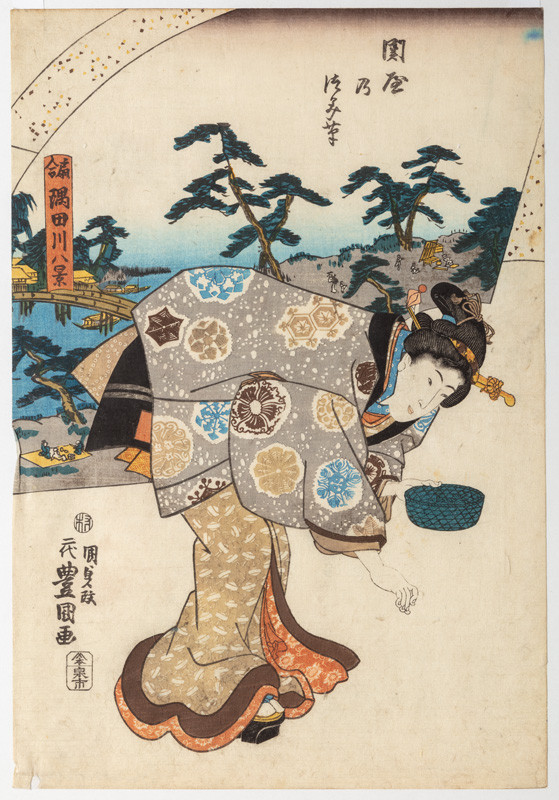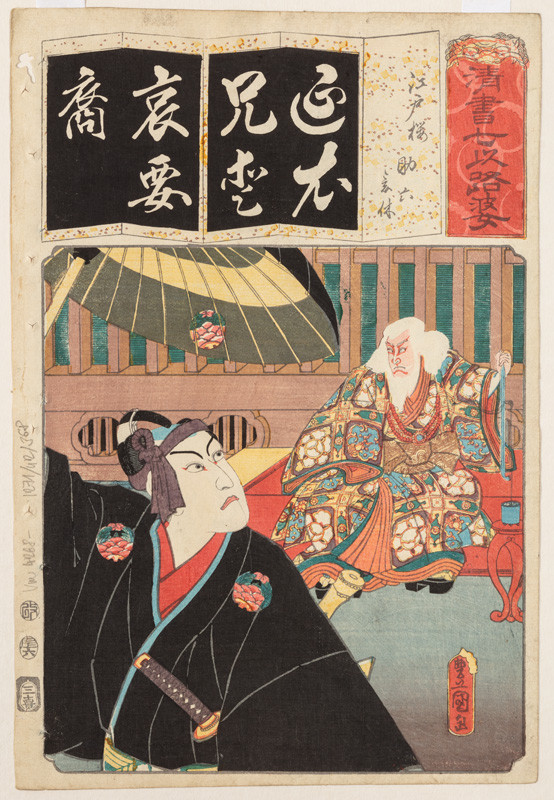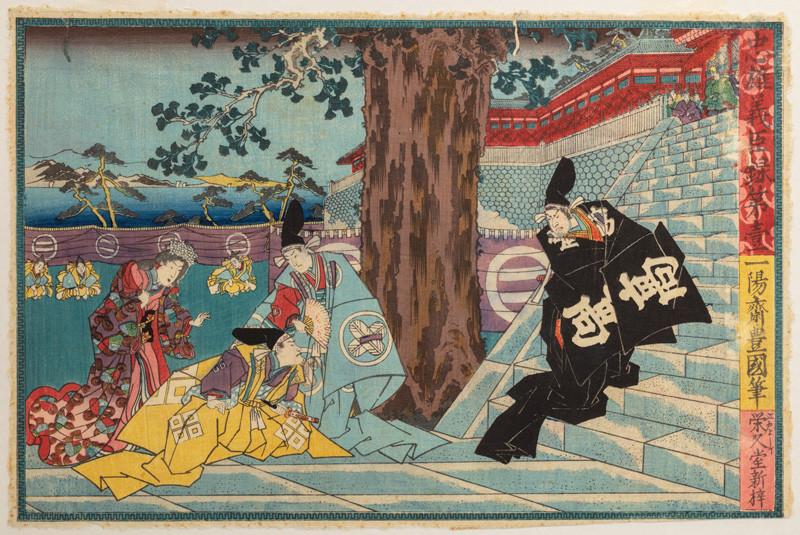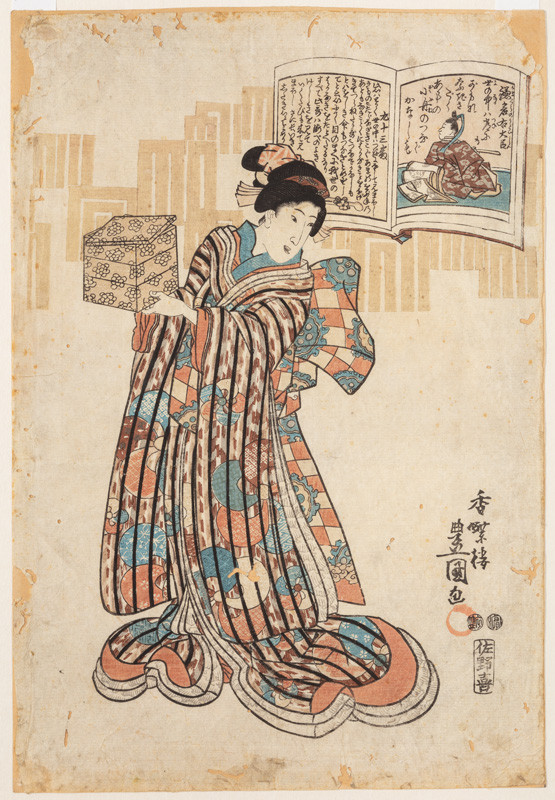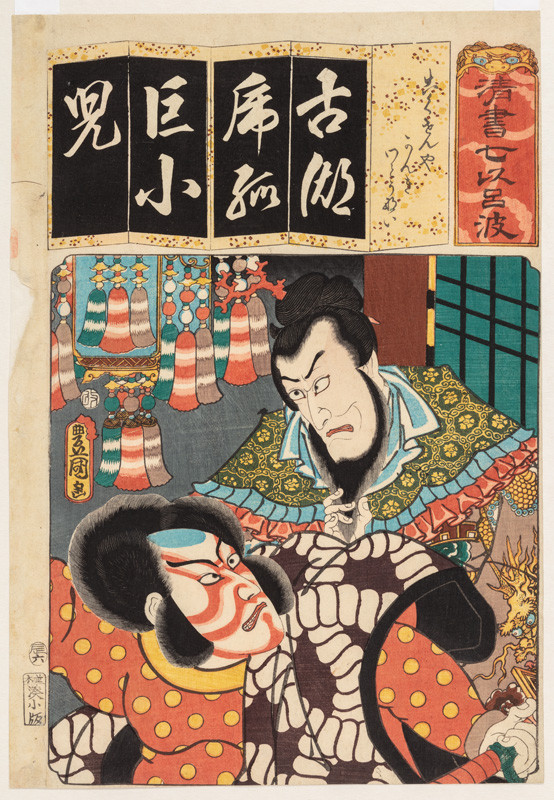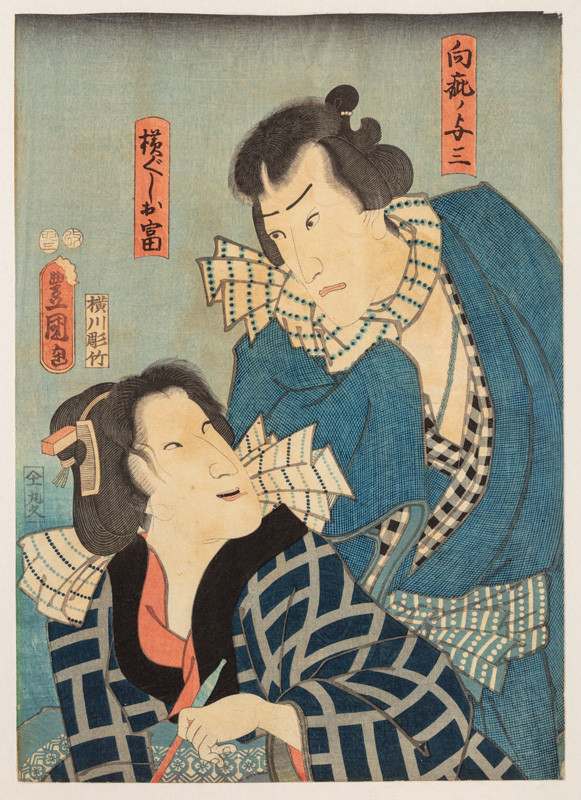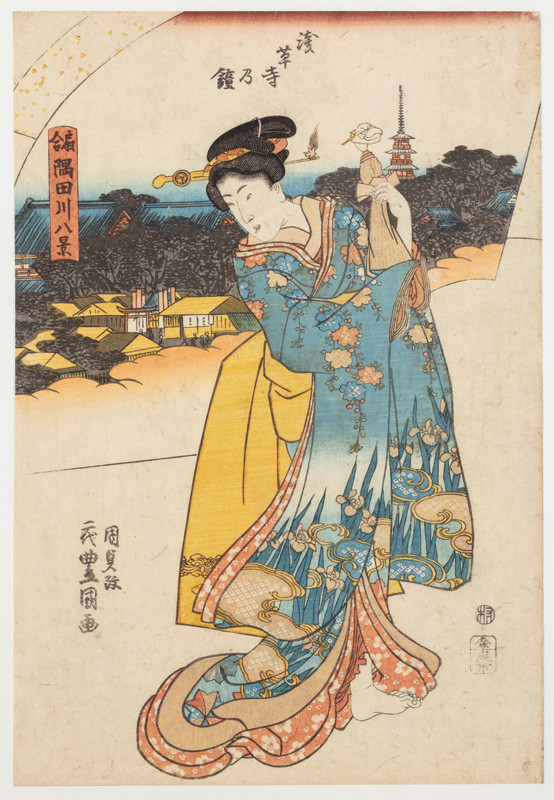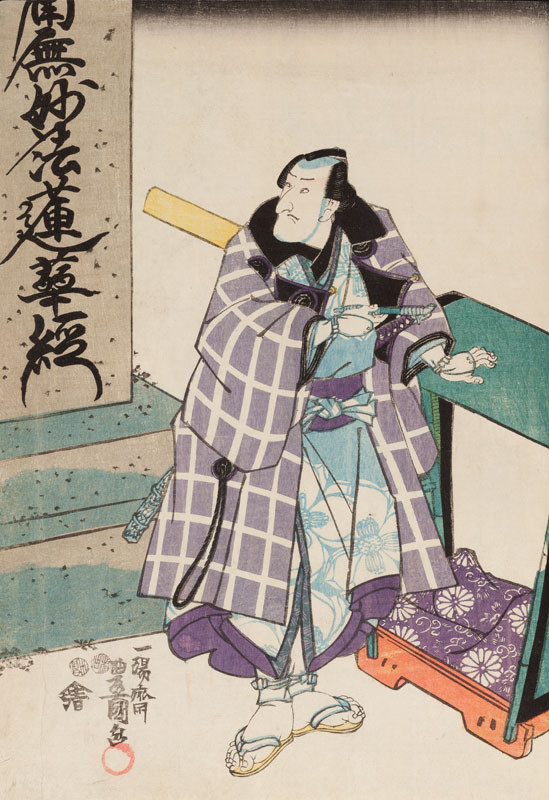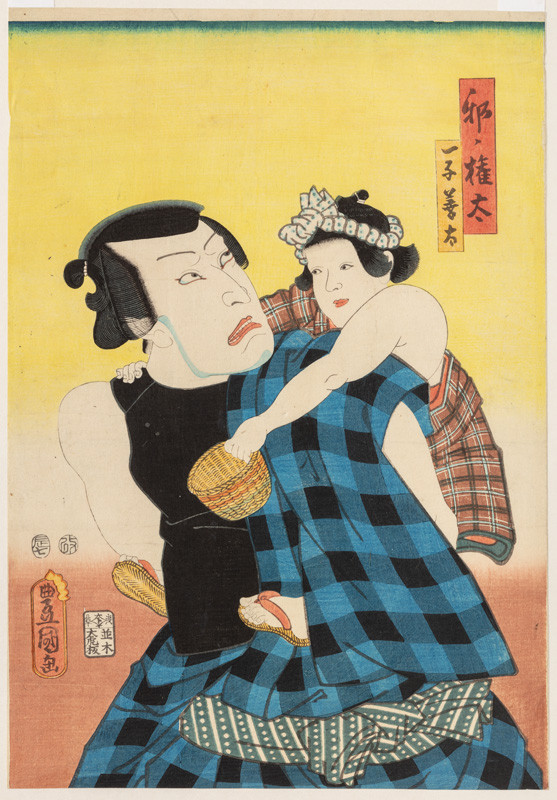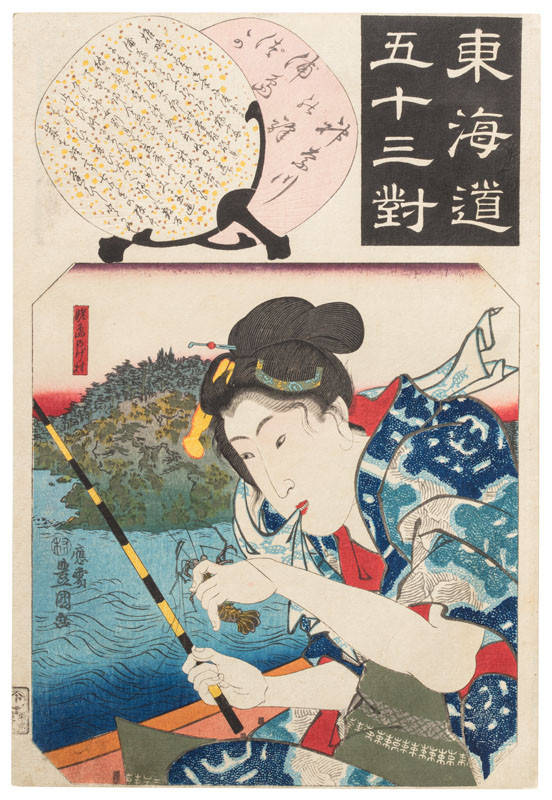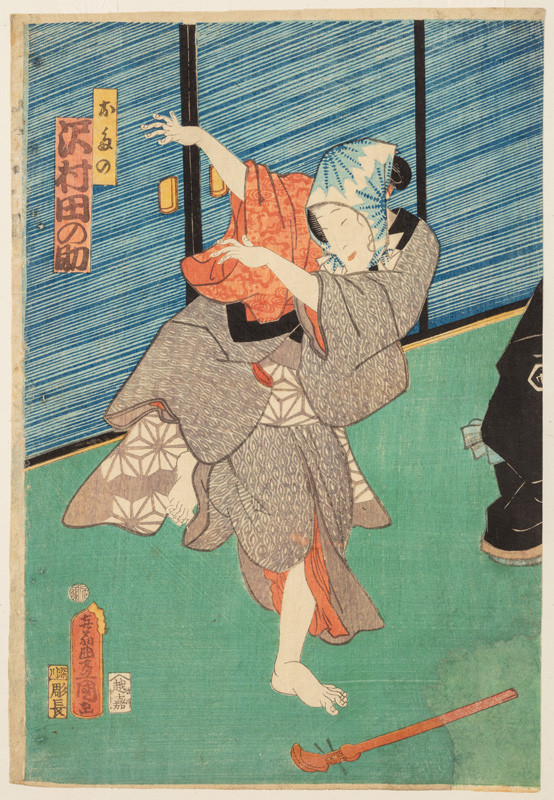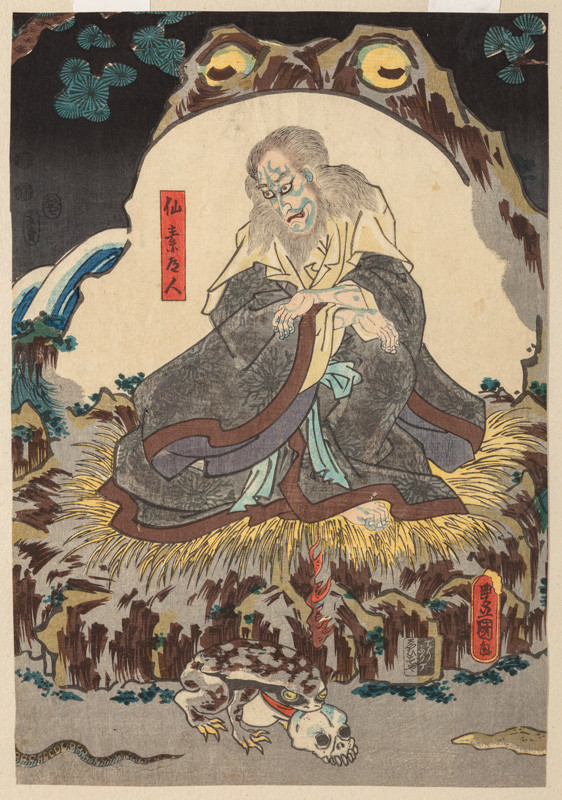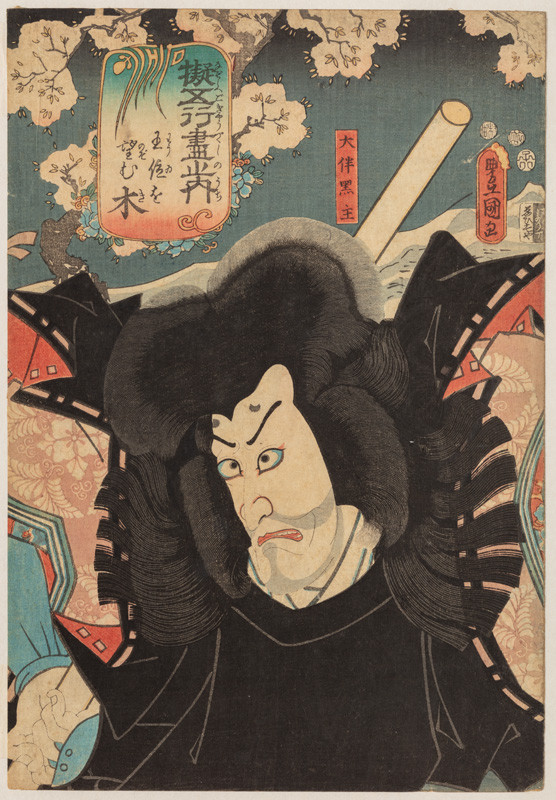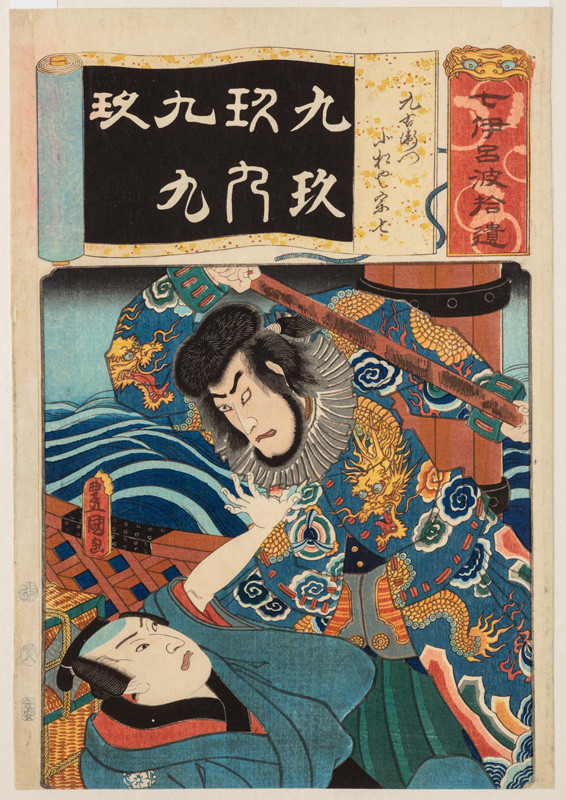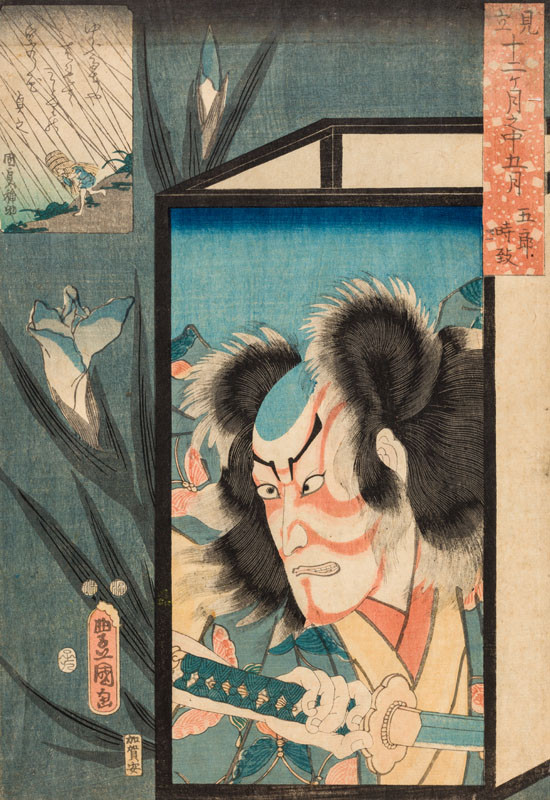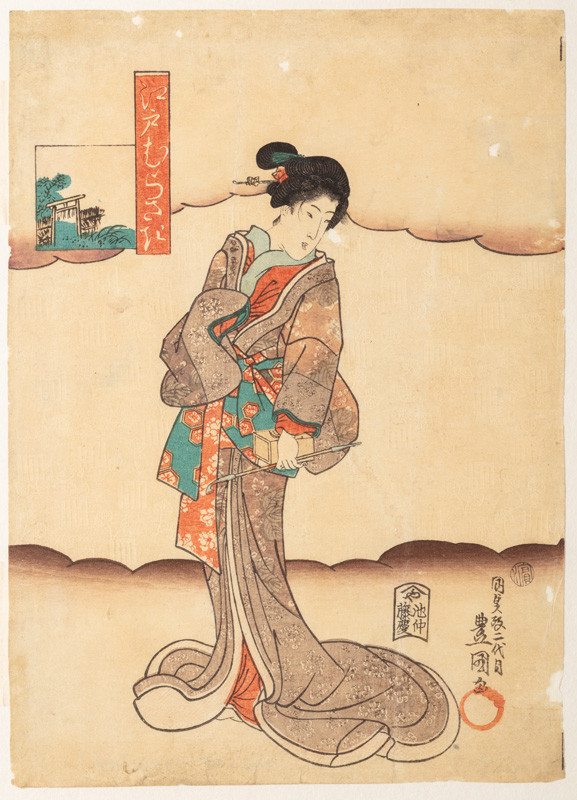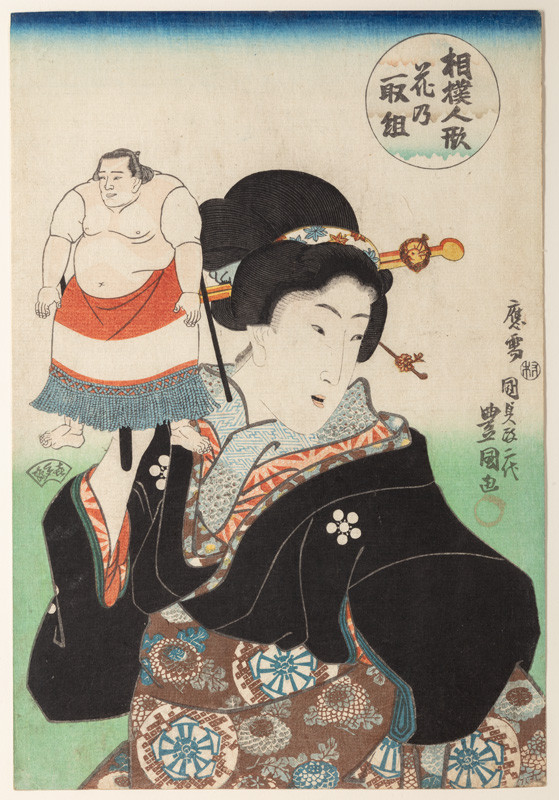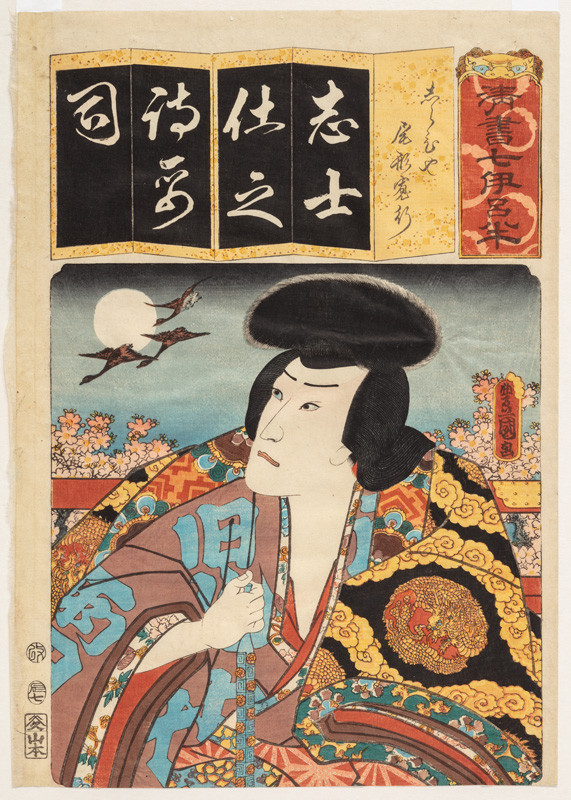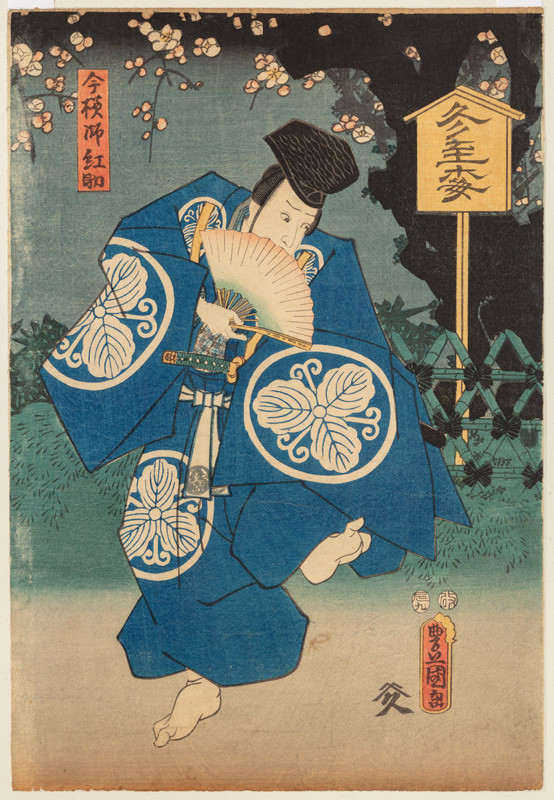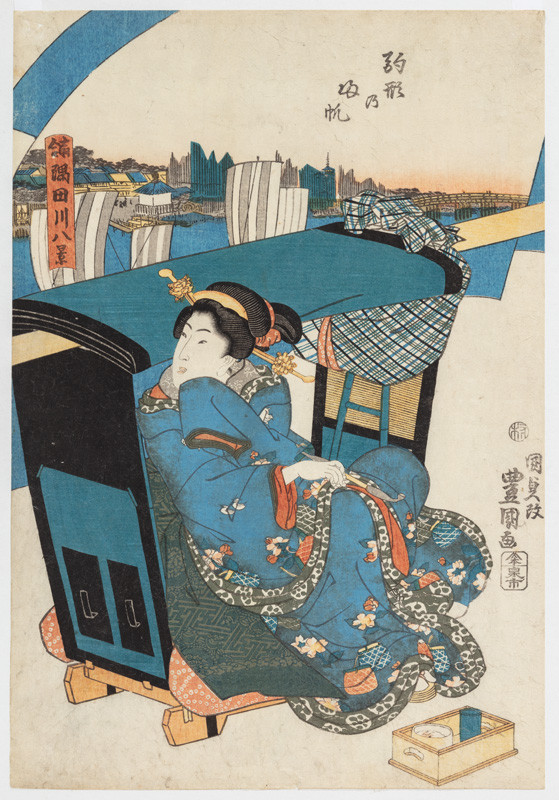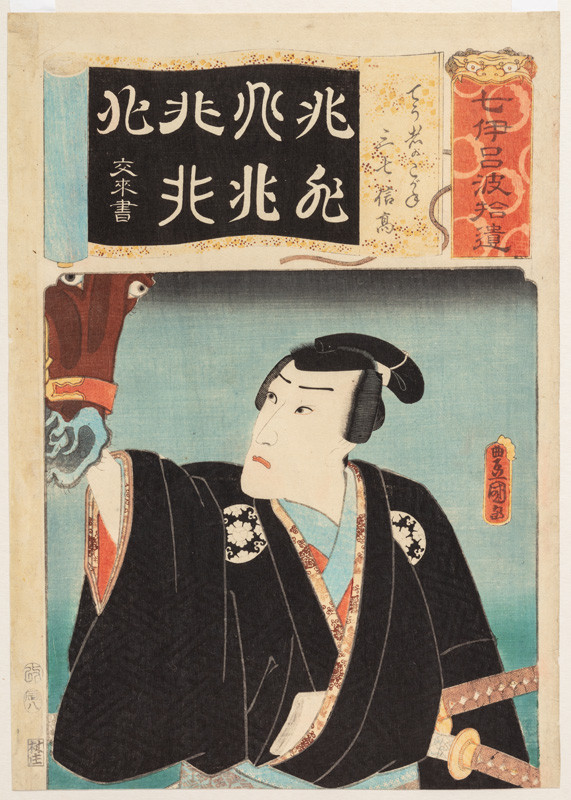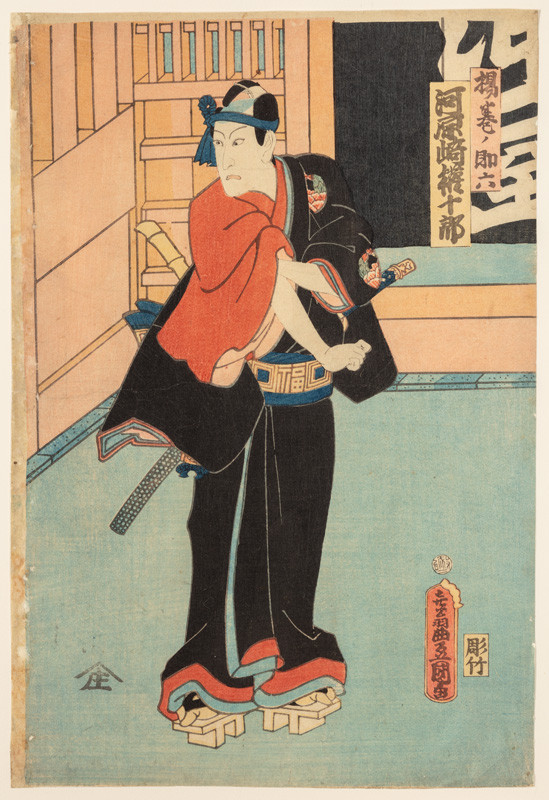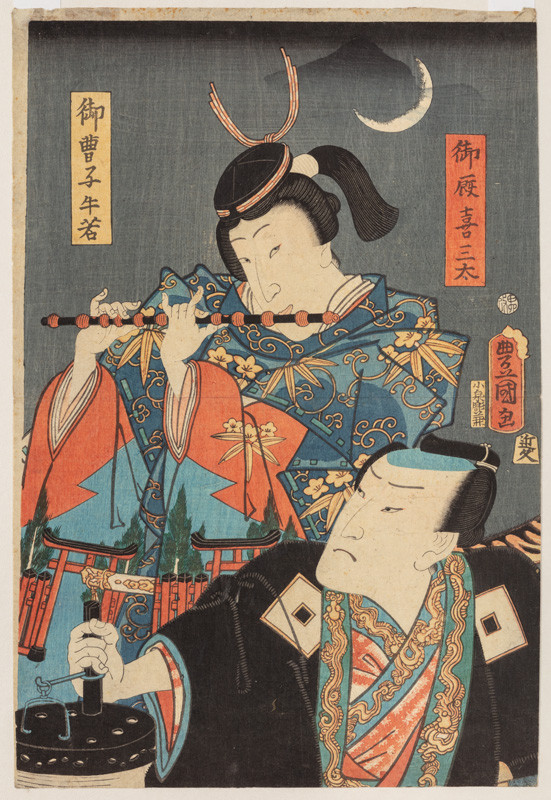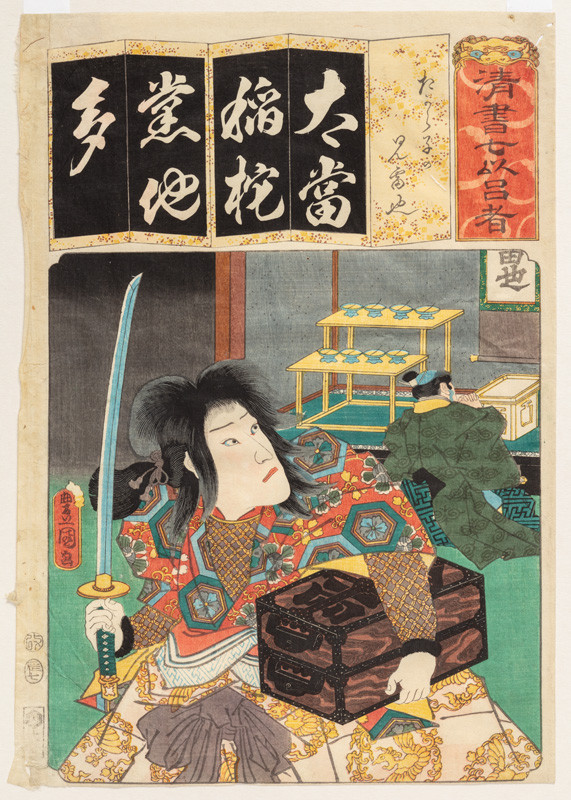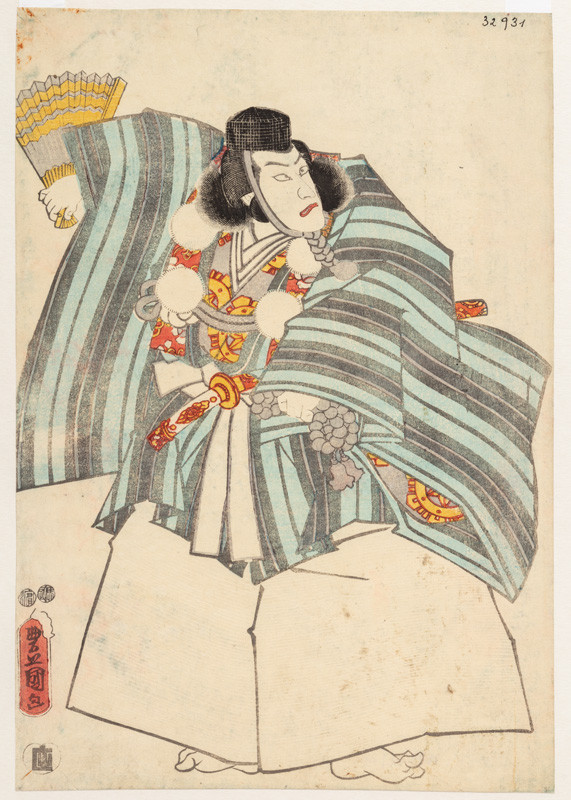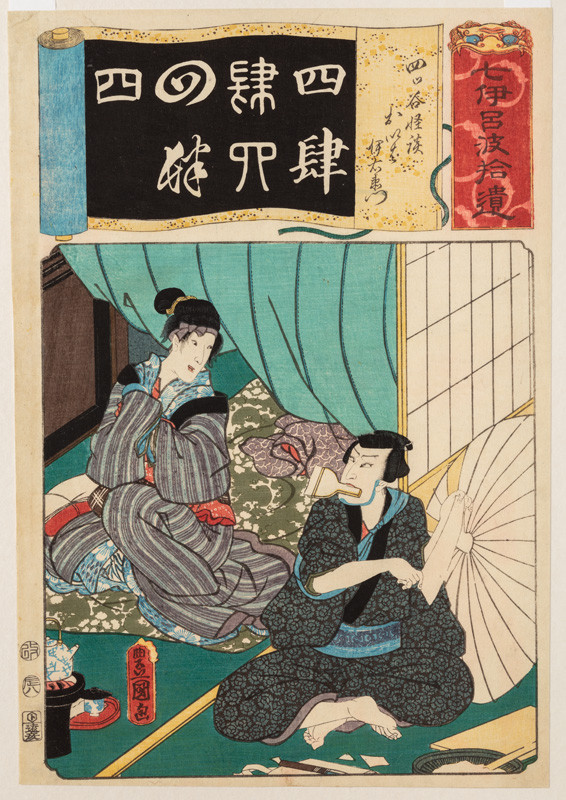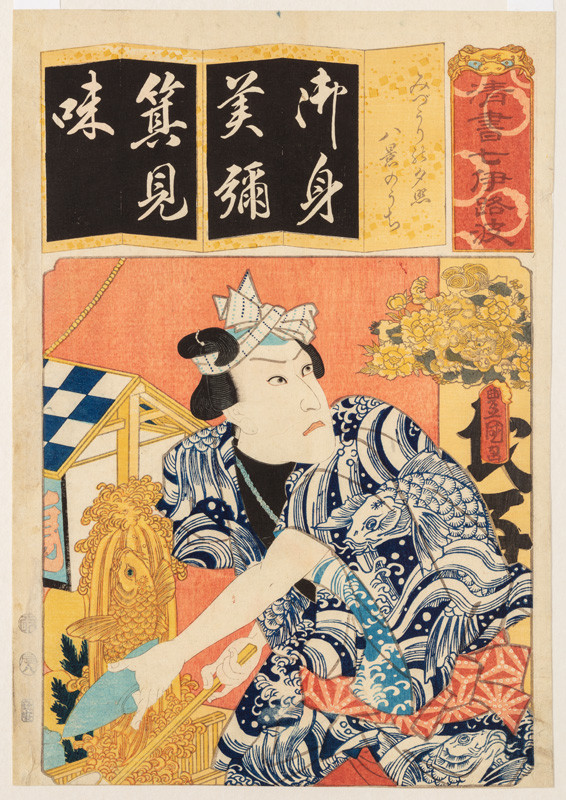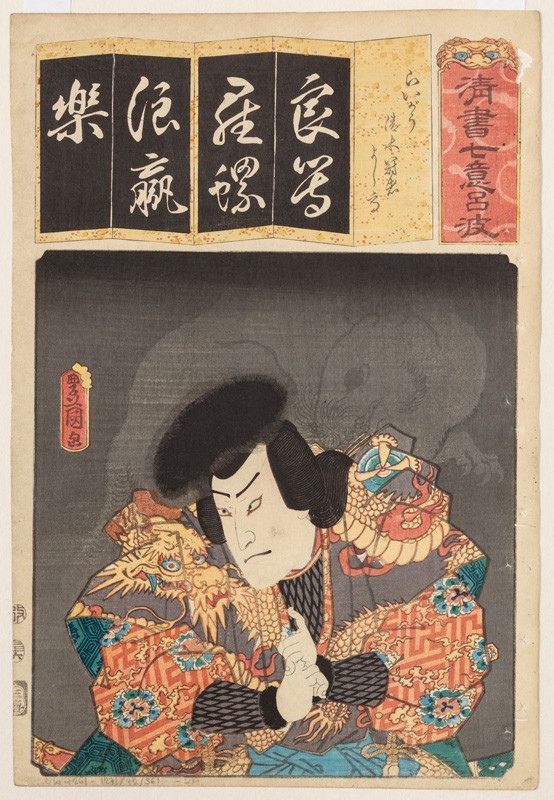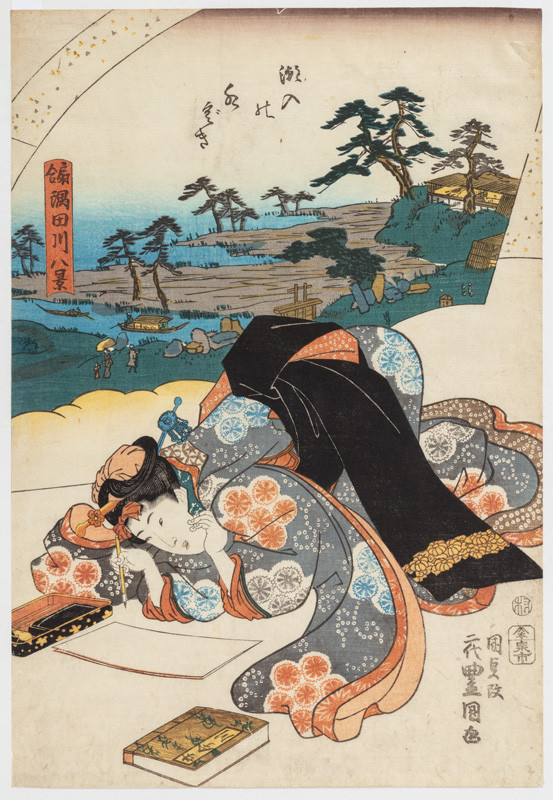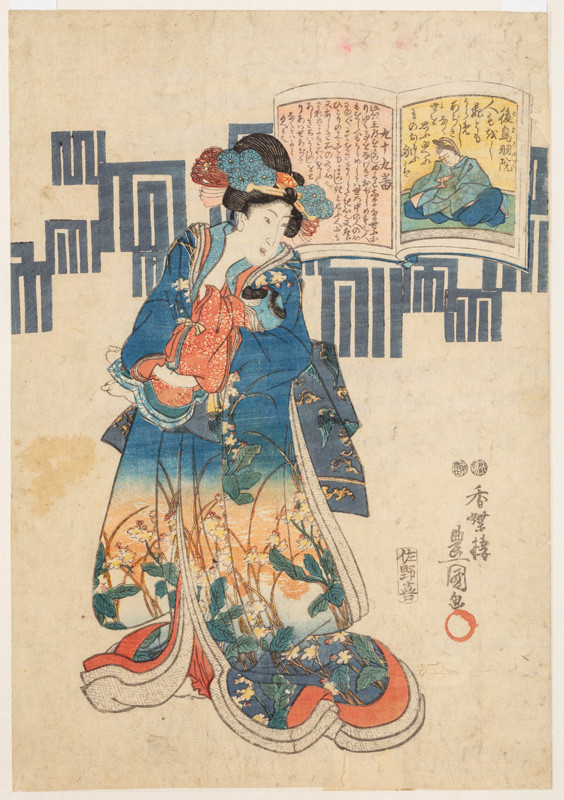
The sheet bears the stamp of the publisher (Sanoki) and the censor’s seals Hama and Kinugasa. In the 1840s, Kunisada did two series with the theme of the classic collection One Hundred Poems by One Hundred Poets (Hyakunin ishshu). According to legend, it is a selection from the rich tradition of Japanese quintet poems waka by the poetry arbiter Fujiwara no Teika, who mentioned the collection in his diary in 1235. The collection Hyakunin ishshu was very popular in the Edo period. It was published in many editions of books of woodblock prints starting in the early 17th century and many people knew its poems by heart. It even became a card game, which is played on New Year’s Day. In Kunisada’s concept, the portraits of the poets and their poems in open books in the top right corner are accompanied by figures of beauties dressed in fashionable kimonos. Under the open book motif in the second series dedicated to the collection Hyakunin ishshu, Kunisada added a decorative band with the geometric pattern genjimon, whose 54 variants were originally formed to designate the 54 chapters of the Tale of Genji. The author of reproduced poem No. 99 from the collection Hyakunin ishshu is the former Emperor Go-Toba (Gotoba no in), who failed to suppress the rebellion against the shoguns in 1221, was defeated by the Hōjō family and sent into exile. The text of the poem reads: I regret the people – I hate some of them – I am grieving – in the world of falls and subterfuge – I am disabled by conscience. Hito wo oshi – hito wo urameshi – ajiki naku – jo wo omou yue ni – mono omou mi wa. (See Helena Honcoopová, Kunisada, Praha 2005, p. 96)

